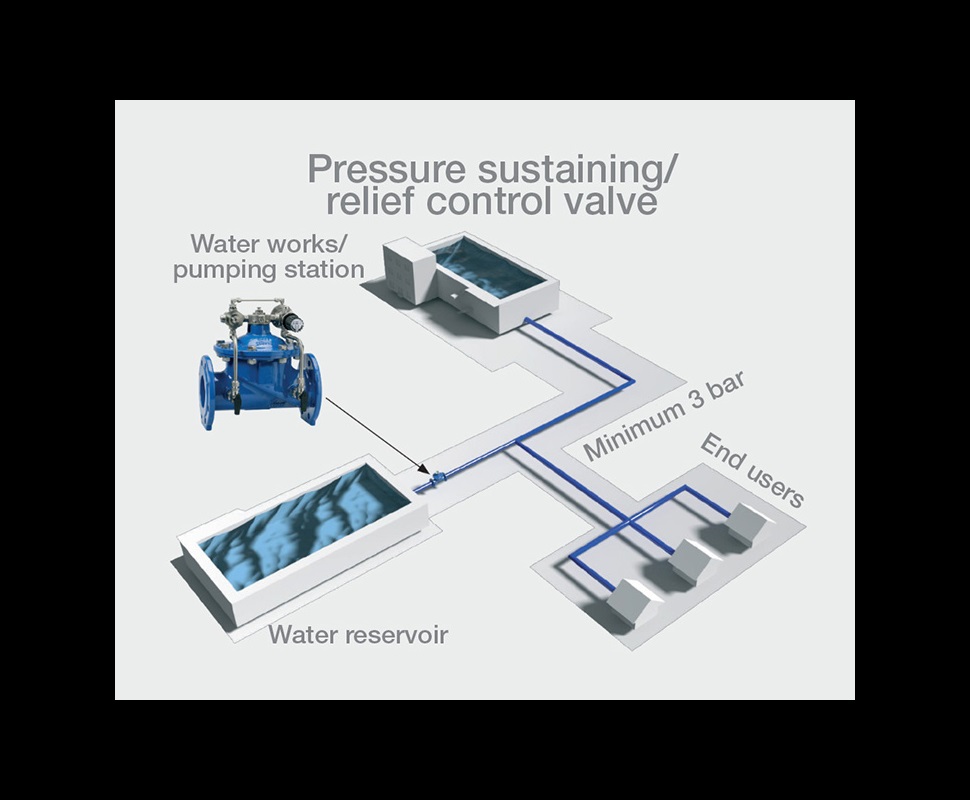Enhancing Functional Efficiency with Advanced Control Valves
Enhancing Functional Efficiency with Advanced Control Valves
Blog Article

Maximize Power Financial Savings and Convenience With Advanced Building Automation Controls
In the world of modern architecture and facility administration, the integration of sophisticated structure automation controls stands as an essential development. By harnessing the power of automation, structures can adapt, react, and advance in means that were when unimaginable.
Energy Effectiveness Perks
Power performance advantages can substantially lower power usage and functional expenses in structures. By applying energy-efficient practices and technologies, building proprietors and drivers can achieve significant savings while additionally adding to environmental sustainability. Among the primary advantages of improving power efficiency in structures is the decrease of utility bills. Energy-efficient systems, such as innovative building automation controls, can maximize using sources like heating, cooling, and lights, causing reduced energy costs with time.
Furthermore, improved power efficiency can prolong the life expectancy of building equipment and systems. By running more effectively, heating and cooling systems, lighting fixture, and other building components experience much less damage, causing lowered maintenance and substitute expenses. Additionally, energy-efficient buildings typically regulate greater home values and rental rates, providing lasting financial benefits to proprietors.
Moreover, power efficiency can boost owner comfort and productivity. Effectively managed indoor environments with ideal lighting and thermal conditions create a more conducive and pleasant work area, resulting in enhanced employee fulfillment and efficiency. Overall, the energy efficiency benefits related to sophisticated structure automation controls are multifaceted, including expense financial savings, ecological stewardship, and owner wellness.
Boosted Convenience Control
Enhancing comfort control in structure settings calls for a sophisticated combination of advanced automation systems for ideal passenger health. By making use of advanced structure automation controls, centers can customize the indoor environment to meet the certain requirements and preferences of passengers. control valves.
By incorporating these innovative controls, buildings can not only improve convenience but additionally improve energy effectiveness by maximizing system operations based on actual occupancy and usage patterns. Eventually, focusing on owner convenience through advanced automation systems leads to a much more pleasurable and much healthier interior setting.
Functional Effectiveness Improvements

Moreover, the application of real-time monitoring and analytics devices allows structure drivers to determine energy inefficiencies and operational anomalies without delay. By continually keeping track of energy usage patterns and system efficiency metrics, changes can be made in real-time to enhance energy intake and make certain peak operational performance. control valves. In addition, incorporating demand response techniques right into structure automation controls can additionally enhance operational performance by dynamically adjusting power use based upon grid conditions and prices signals
Indoor Environment Optimization
Effective interior climate optimization is a fundamental element of building automation controls, making sure passengers' comfort and health while making the most of energy savings. By click to find out more utilizing innovative sensors and controls, browse around here building automation systems can constantly change and check temperature level, moisture degrees, air top quality, and ventilation to develop an optimal indoor setting. Preserving consistent and comfy conditions not only boosts passenger satisfaction yet likewise boosts efficiency and total health.
Indoor climate optimization also plays a critical role in energy performance. By fine-tuning cooling, heating, and air flow systems based upon real-time information and occupancy patterns, building automation controls can significantly reduce power usage - control valves. As an example, executing strategies such as demand-controlled air flow and thermal zoning can help reduce energy waste while making sure that each area of the structure obtains the essential conditioning.

Lasting Atmosphere Development
Structure automation controls not only maximize indoor environment conditions for power efficiency and resident comfort yet also lay the structure for developing a sustainable setting with calculated administration of systems and resources. By integrating innovative building automation technologies, such as sensing units, actuators, and smart software program, centers can adjust and monitor power usage in real-time to minimize waste and decrease their carbon impact. These systems enable anticipating upkeep, identifying prospective problems prior to they escalate and enhancing devices efficiency to improve longevity and performance.
In addition, sustainable atmosphere production extends past energy management to encompass water preservation, waste reduction, and interior my company air top quality renovation. Building automation controls can regulate water usage, find leaks, and ensure appropriate garbage disposal practices, contributing to general sustainability initiatives. Additionally, by keeping track of and controlling air flow and filtering systems, these technologies boost resident health and efficiency while reducing power usage connected with a/c procedures.
Final Thought
To conclude, progressed structure automation regulates offer considerable benefits in terms of power cost savings, comfort control, functional performance, indoor climate optimization, and developing a lasting environment. By executing these controls, structures can attain optimum efficiency while decreasing energy consumption and enhancing passenger comfort. It is noticeable that using sophisticated automation technology is crucial in improving building efficiency and creating an extra sustainable future.
Power efficiency benefits can substantially lower power consumption and functional costs in structures. In general, the energy performance advantages connected with innovative structure automation controls are diverse, incorporating expense financial savings, ecological stewardship, and resident well-being.
Additionally, integrating need response techniques into structure automation controls can additionally improve functional efficiency by dynamically adjusting energy usage based on grid conditions and prices signals.
Building automation controls not just enhance interior climate conditions for power effectiveness and resident convenience yet likewise lay the structure for creating a lasting environment via calculated monitoring of systems and sources.In verdict, progressed structure automation regulates deal substantial benefits in terms of energy financial savings, comfort control, operational effectiveness, indoor climate optimization, and producing a lasting environment.
Report this page